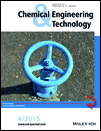Predictive Models for Thermal Behavior of Chemicals with Quantitative Structure-Property Relationships
Abstract
Most processes in the chemical industry involve potentially hazardous steps. It is thus of critical importance to perform risk assessments and to know the thermal behavior of the chemicals at stake. A widely used thermal analysis, differential scanning calorimetry, allows verifying if the compounds are stable towards heat or if they decompose above certain temperatures. This information helps setting the appropriate handling and storage conditions for safe operations. The time and resources needed for these experimental investigations would be reduced if the testing phase could be better targeted and guided using reliable predictive methods. This work helps to answer these needs by proposing predictive models for thermal stability based on the quantitative structure-property relationships method.




